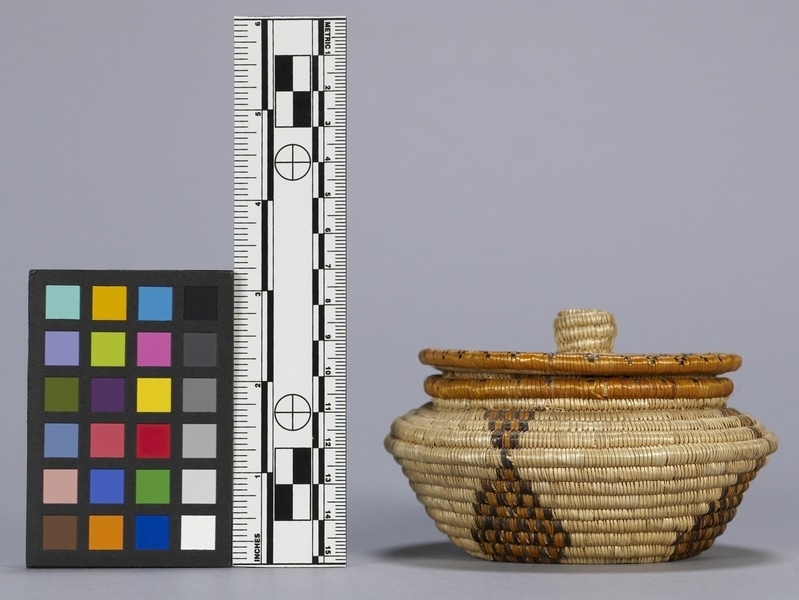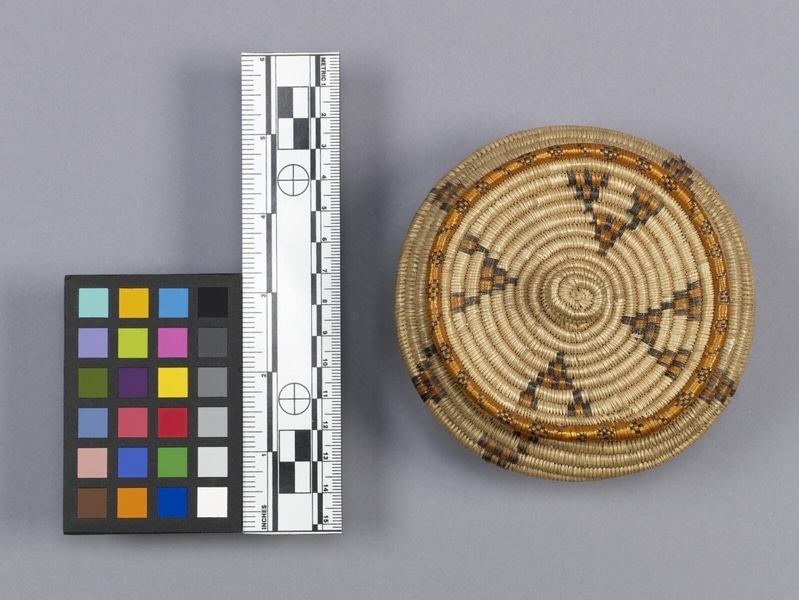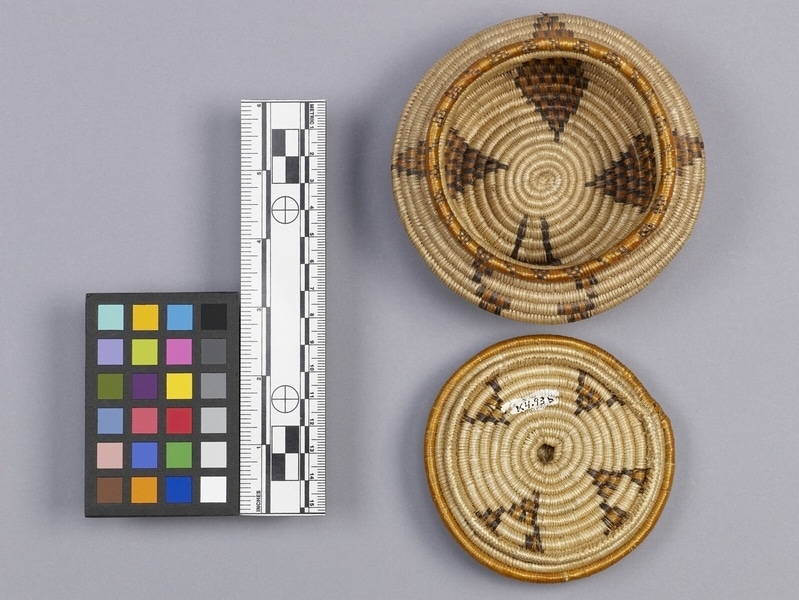Basket Item Number: K4.93 a-b from the MOA: University of British Columbia




Description
A small coiled basket with the shape of a compressed jar (part a), and a lid (part b). The main basket (part a) design consists of four equally spaced brown, and orange geometric shapes coming from the centre bottom up along the sides on a natural coloured background. Three geometric shapes are checkered triangles at the bottom, which have downward pointing triangles on top. The last geometric shape is a v-shape. The rim of the basket (part a) has a pattern of dark brown checkered diamond shapes along an orange background. The lid (part b) has the same rim pattern as the basket. The lid (part b) has a design which consists of four equally spaced spaced brown, and orange v-shapes. The lid (part b) has a knob at the centre, and a straight lower-edged inner side which fits into the basket rim.
History Of Use
Based on its lid, this basket was likely used for storage. Grass weaving is done by both men and women, but baskets are traditionally woven by most women. Angular, triangular, and checkered patterns are common among Ovimbundu basketry. The intricate shape and design of this basket indicates a skilled basket maker.
Specific Techniques
The colours used in this basket are dark brown and yellow. The yellow dye used within this basket is made from the roots of wild rhubarb, called ocilunguluila by the Ovimbundu. The roots are pounded and placed in cold water with the grasses used to create the coils. After some time the mixture is placed in a fire to boil for a half hour. After this process the grasses have turned an amber-yellow colour. To create the dark brown the basket maker would have to mix red dye with yellow dye or they could have made a light black dye. Red dye is made by taking leaves of a plant named evava and cooking them in water along with the bark of the tree ukondo. After these ingredients have sufficiently simmered, they are mixed with ash and buried. This process produces the red colouring. Black dye is made when the leaves of evava are mixed in a solution of iron obtained from stagnant muddy pools. Grasses are placed into the evava-iron solution and boiled to darken. It can be darkened further by boiling the solution again with the addition of pounded ungalo leaves.
Item History
- Made in Angola
- Collected during 1950
- Owned by Anne E. Copithorne before November 14, 1973
- Received from Anne E. Copithorne (Donor) on November 14, 1973
What
Who
- Culture
- Ovimbundu
- Previous Owner
- Anne E. Copithorne
- Received from
- Anne E. Copithorne (Donor)
Where
- Holding Institution
- MOA: University of British Columbia
- Made in
- Angola
When
- Collection Date
- during 1950
- Ownership Date
- before November 14, 1973
- Acquisition Date
- on November 14, 1973
Other
- Item Classes
- basketry
- Condition
- good
- Current Location
- Case 100
- Accession Number
- 0251/0106 a-b